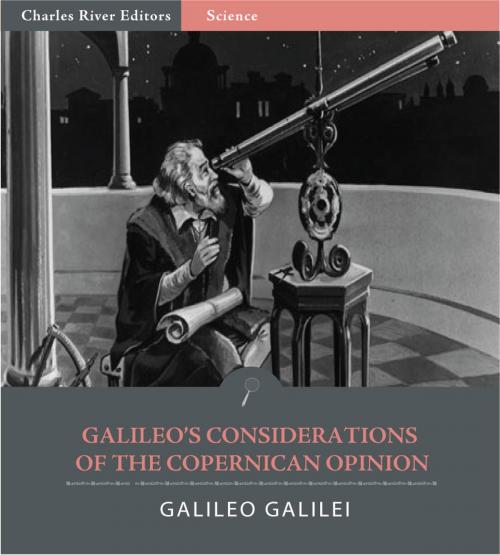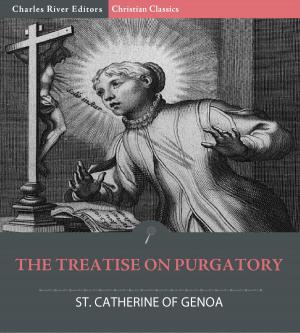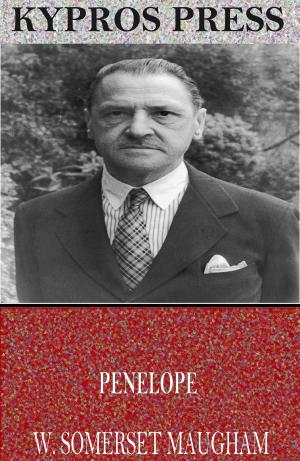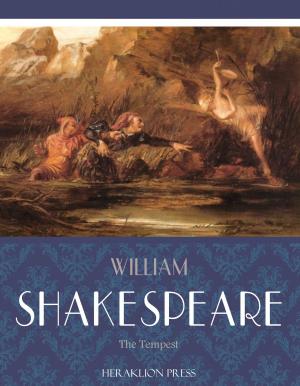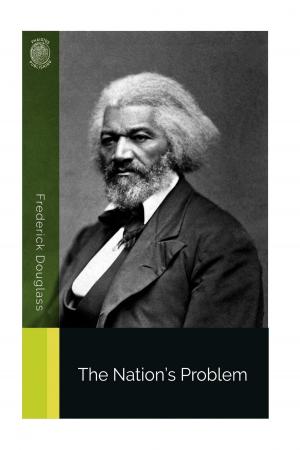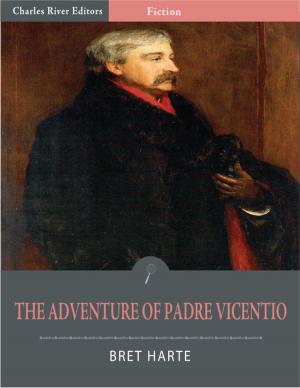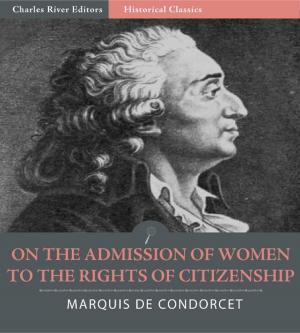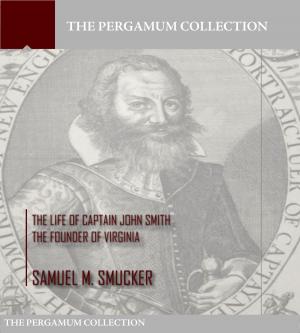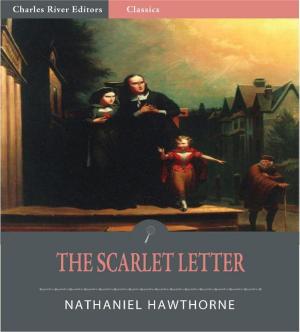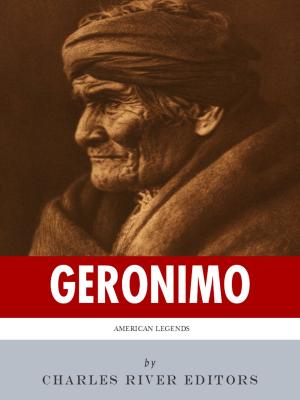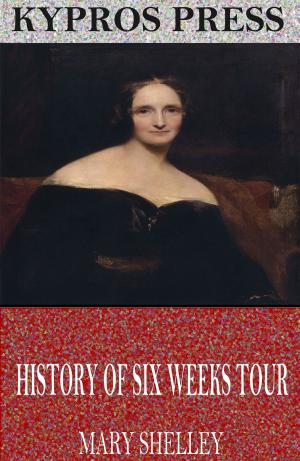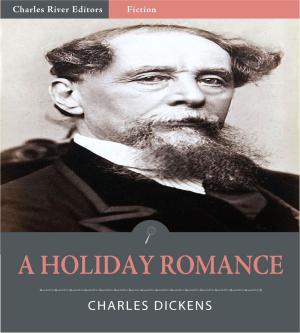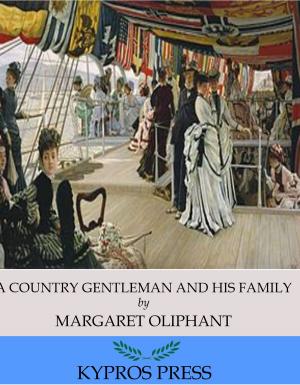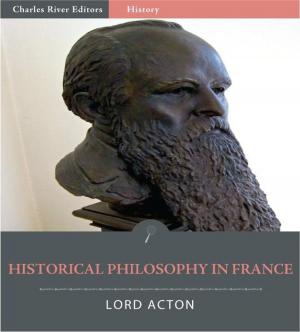Galileos Considerations on the Copernican Opinion (Illustrated Edition)
Nonfiction, Science & Nature, Science, Physics, Astronomy, Astrophysics & Space Science, Other Sciences| Author: | Galileo Galilei | ISBN: | 9781475302950 |
| Publisher: | Charles River Editors | Publication: | March 7, 2012 |
| Imprint: | Language: | English |
| Author: | Galileo Galilei |
| ISBN: | 9781475302950 |
| Publisher: | Charles River Editors |
| Publication: | March 7, 2012 |
| Imprint: | |
| Language: | English |
Galileo Galilei (1564-1642) needs no formal introduction, being one of the most famous astronomers and scientists in history. After four years, Galileo had announced to his father that he wanted to be a monk. This was not exactly what father had in mind, so Galileo was hastily withdrawn from the monastery. In 1581, at the age of 17, he entered the University of Pisa to study medicine, as his father wished. At age 20, Galileo noticed a lamp swinging overhead while he was in a cathedral. Curious to find out how long it took the lamp to swing back and forth, he used his pulse to time large and small swings. Galileo discovered something that no one else had ever realized: the period of each swing was exactly the same. The law of the pendulum, which would eventually be used to regulate clocks, made Galileo instantly famous. Except for mathematics, Galileo was bored with university. Galileo's family was informed that their son was in danger of flunking out. A compromise was worked out, where Galileo would be tutored full-time in mathematics by the mathematician of the Tuscan court. Galileo's father was hardly overjoyed about this turn of events, since a mathematician's earning power was roughly around that of a musician, but it seemed that this might yet allow Galileo to successfully complete his college education. However, Galileo soon left the University of Pisa without a degree. One of the instrumental figures in the Scientific Revolution, Galileos achievements include improvements to the telescope and consequent astronomical observations, and support for Copernicanism. Galileo has been called the "father of modern observational astronomy", the "father of modern physics", the "father of science", and "the Father of Modern Science". According to Stephen Hawking, "Galileo, perhaps more than any other single person, was responsible for the birth of modern science". Galileos Considerations on the Copernican Opinion came about during the Galileo affair around 1610, during which Galileo came into conflict with the Aristotelian scientific view of the universe (supported by the Catholic Church), over his support of Copernicus heliocentric theory. In 1610, Galileo published his Sidereus Nuncius (Starry Messenger), describing the surprising observations that he had made with the new telescope. These and other discoveries] exposed severe difficulties with the scientific understanding of the universe that had existed since the beginning of science, and raised new interest in studies such as the heliocentric theory of Copernicus (published in De revolutionibus orbium coelestium in 1543). Many scientists attacked the theory because it disagreed with Aristotle's model of the universe, as well as several passages of Scripture. Galileo's part in the controversies over theology, astronomy, and philosophy culminated in his trial and sentencing by the Roman Inquisition in 1633 on a grave suspicion of heresy. This edition of Galileos Considerations on the Copernican Opinion is specially formatted with a Table of Contents and illustrations of Copernicus, Galileo, and the heliocentric model.
Galileo Galilei (1564-1642) needs no formal introduction, being one of the most famous astronomers and scientists in history. After four years, Galileo had announced to his father that he wanted to be a monk. This was not exactly what father had in mind, so Galileo was hastily withdrawn from the monastery. In 1581, at the age of 17, he entered the University of Pisa to study medicine, as his father wished. At age 20, Galileo noticed a lamp swinging overhead while he was in a cathedral. Curious to find out how long it took the lamp to swing back and forth, he used his pulse to time large and small swings. Galileo discovered something that no one else had ever realized: the period of each swing was exactly the same. The law of the pendulum, which would eventually be used to regulate clocks, made Galileo instantly famous. Except for mathematics, Galileo was bored with university. Galileo's family was informed that their son was in danger of flunking out. A compromise was worked out, where Galileo would be tutored full-time in mathematics by the mathematician of the Tuscan court. Galileo's father was hardly overjoyed about this turn of events, since a mathematician's earning power was roughly around that of a musician, but it seemed that this might yet allow Galileo to successfully complete his college education. However, Galileo soon left the University of Pisa without a degree. One of the instrumental figures in the Scientific Revolution, Galileos achievements include improvements to the telescope and consequent astronomical observations, and support for Copernicanism. Galileo has been called the "father of modern observational astronomy", the "father of modern physics", the "father of science", and "the Father of Modern Science". According to Stephen Hawking, "Galileo, perhaps more than any other single person, was responsible for the birth of modern science". Galileos Considerations on the Copernican Opinion came about during the Galileo affair around 1610, during which Galileo came into conflict with the Aristotelian scientific view of the universe (supported by the Catholic Church), over his support of Copernicus heliocentric theory. In 1610, Galileo published his Sidereus Nuncius (Starry Messenger), describing the surprising observations that he had made with the new telescope. These and other discoveries] exposed severe difficulties with the scientific understanding of the universe that had existed since the beginning of science, and raised new interest in studies such as the heliocentric theory of Copernicus (published in De revolutionibus orbium coelestium in 1543). Many scientists attacked the theory because it disagreed with Aristotle's model of the universe, as well as several passages of Scripture. Galileo's part in the controversies over theology, astronomy, and philosophy culminated in his trial and sentencing by the Roman Inquisition in 1633 on a grave suspicion of heresy. This edition of Galileos Considerations on the Copernican Opinion is specially formatted with a Table of Contents and illustrations of Copernicus, Galileo, and the heliocentric model.
